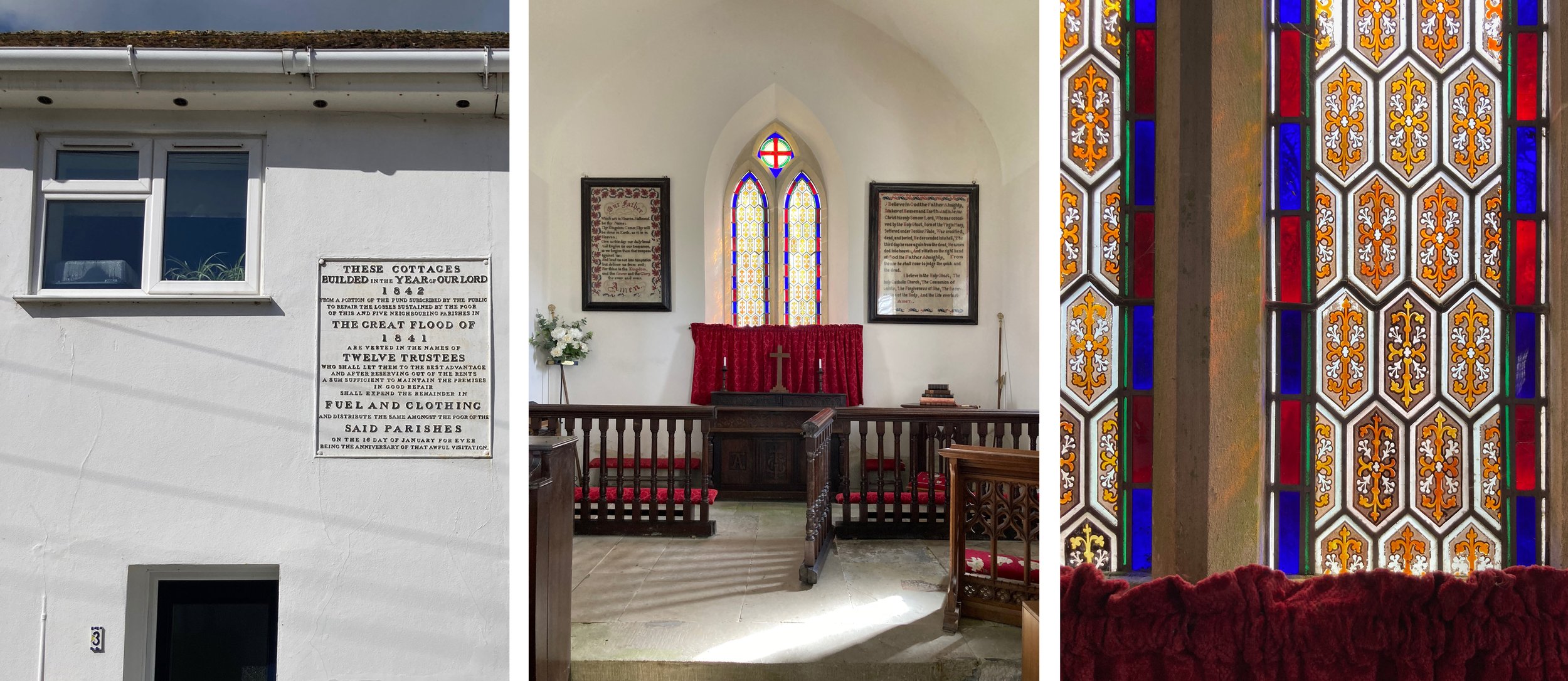The concept was clear and simple, to make a panel 300mm square inspired by The Thames at Kelmscott via some old favourites - May Morris’ embroidery (top) and my drawings done along the same stretch of the river (above). I worked on it sporadically during a few disjointed weeks, making decisions along the way guided by the materials rather than making a detailed plan and then executing it.
During this process I continue to be amazed at my incompetence. I’m not able to see whether I like what I’m making until it’s leaded up, cemented and in the window. This small panel was leaded up four times, I reused the lead again and again resulting in a slightly chewed up appearance, a good description of how I feel after finishing the piece. In the final version (number 4) I have kept the best bits of painting with little lines that reference the embroidered stitches without copying anything in the picture.
Starting by finding the pieces of glass I wanted to use; on the lightbox you can see the textures of the central piece (Pilkington’s arctic) and the purple cast chunks; first attempt at painting.
Panel masked up for painting before the next firing: version 1 leaded up and in the window: the same panel with the tracing paper backing removed, electric colours and cauliflower textures. However, I should know by now that just copying a good drawing on to glass never works.
I pulled the panel apart and preferred it like this; version 2 repainted with the corner pieces I hated replaced by scraps of painted reeds - just looked like a mess; version 3 with a yellow border - composition is unbalanced and not what I wanted.
Pulled the panel apart again and chose some peaceful watery scraps of painted glass: version 4 in the window; version 4 with tracing paper behind.






























